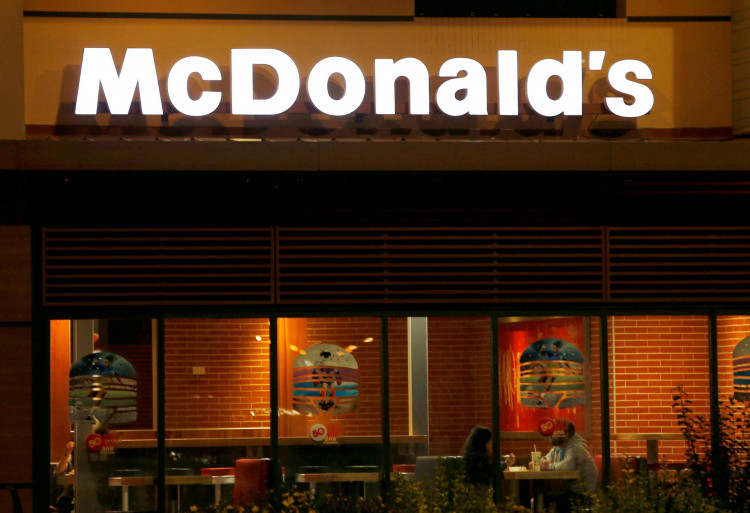The first lawsuit has been filed against McDonald's in connection with the recent E. coli outbreak, which has sickened at least 49 people across 10 states and resulted in one death. A man from Colorado, Eric Stelly, lodged the lawsuit after experiencing severe gastrointestinal issues following his consumption of a Quarter Pounder sandwich from a McDonald's location in Greeley. The legal action, filed in Cook County, Illinois-where McDonald's is headquartered-accuses the fast-food chain of product liability, negligence, and breach of implied warranties.
This lawsuit follows the Centers for Disease Control and Prevention (CDC) issuing a food safety alert that pointed to McDonald's Quarter Pounders as the likely source of the outbreak. The CDC has not yet confirmed the exact source of contamination, though it suggests that either the beef patties or slivered onions used in the sandwiches may be to blame. The U.S. Food and Drug Administration (FDA) is investigating, but McDonald's has already removed Quarter Pounders from the menu at numerous locations and stopped using the potentially affected ingredients in certain states.
Stelly's attorney, Ron Simon, who specializes in food safety litigation, emphasized the serious nature of the case. "The McDonald's E. coli outbreak will be one of the most significant food poisoning outbreaks this year," Simon said in a press release. He further stated that his firm represents at least 10 other victims and that the lawsuit aims to ensure that McDonald's and its suppliers are held accountable for the outbreak.
McDonald's has responded by removing Quarter Pounders from menus in states including Colorado, Kansas, Utah, and Wyoming. Joe Erlinger, President of McDonald's USA, addressed the situation publicly, saying on NBC's Today show that the affected ingredients are likely no longer in the supply chain. "We are very confident that you can go to McDonald's and enjoy our classics without getting sick," Erlinger said, though he acknowledged that the number of reported illnesses may rise as the CDC continues to investigate.
The strain of E. coli linked to the outbreak is a particularly dangerous one, identified as O157:H7. This strain is known to cause severe symptoms, including bloody diarrhea, stomach cramps, and vomiting. In vulnerable populations, such as young children and the elderly, the infection can lead to life-threatening complications like hemolytic uremic syndrome (HUS), which can cause kidney failure. According to the CDC, symptoms of E. coli infection typically appear three to four days after exposure but can take up to 10 days to manifest.
E. coli is often associated with contamination from fecal matter, and it can spread through a variety of foods, including raw vegetables and undercooked meats. In this case, McDonald's beef patties and slivered onions are under scrutiny. Contamination can occur during the processing of the beef, where bacteria from animal intestines can transfer to the meat if proper sanitary measures aren't followed. Vegetables, such as onions, can also become contaminated if they are grown near livestock or fertilized with untreated manure.
Taylor Farms, the supplier of the onions used in McDonald's Quarter Pounders, has stated that it is working closely with federal agencies to ensure safety. "We have removed yellow onions from the market out of an abundance of caution," a spokesperson for Taylor Farms said, adding that their own tests had not found traces of E. coli in the onions.
The outbreak highlights the severe risks posed by E. coli contamination, particularly with strains like O157:H7. This specific strain is one of the leading causes of foodborne illness in the United States, responsible for many outbreaks that result in hospitalization and, in severe cases, death. According to health experts, while most strains of E. coli are harmless, O157produces a potent toxin known as Shiga toxin, which is responsible for the dangerous symptoms experienced by those infected.
Escherichia coli, commonly referred to as E. coli, is a bacteria that can spread through food and water contaminated with fecal matter. The bacteria are known to reside in the intestines of animals, particularly cattle, which is why undercooked beef is frequently associated with E. coli outbreaks. In addition, produce such as lettuce, spinach, and onions can also become contaminated if grown in fields near livestock or if fertilized with manure that has not been properly treated.
The O157:H7 strain is particularly dangerous due to its ability to cause hemolytic uremic syndrome (HUS), a severe complication that can result in kidney failure, especially in young children and the elderly. HUS occurs when the toxin produced by E. coli damages the small blood vessels in the kidneys, leading to severe illness and, in some cases, death. Symptoms of E. coli infection typically include abdominal cramps, bloody diarrhea, and vomiting, with the onset occurring a few days after exposure to the bacteria.
The CDC advises that consumers take precautions to avoid E. coli infection, including thoroughly cooking beef to an internal temperature of 160°F, washing produce carefully, and practicing good hygiene, such as handwashing after using the bathroom or handling raw meat. In addition, individuals should avoid consuming unpasteurized dairy products and juices, as they may harbor harmful bacteria.
Food safety experts warn that while regulatory agencies have improved surveillance and recall mechanisms to catch contaminated products more quickly, foodborne outbreaks like this one can still cause widespread illness due to the delay in identifying the source of contamination. Barbara Kowalcyk, director of the Institute for Food Safety and Nutrition Security at George Washington University, explained that symptoms can take days or even weeks to appear, making it difficult to track the origin of outbreaks in real-time.






